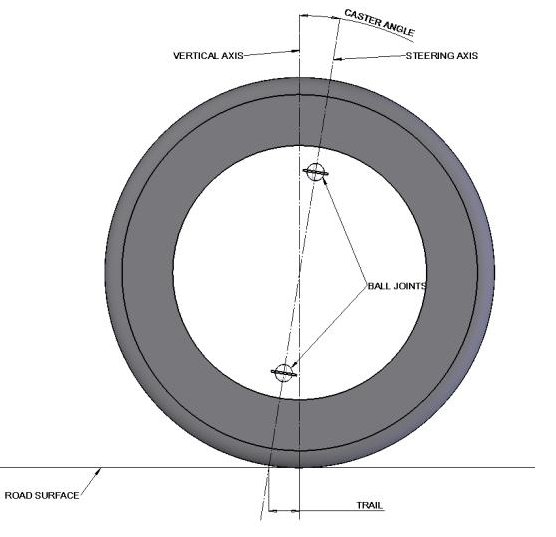High Perfomance Sidecars
Caster Angle
Caster (or castor) angle is the angular displacement from the vertical axis of the suspension of a steered wheel, measured in the longitudinal direction. It is the angle between the pivot line of the steering axis (an imaginary line that runs through the center of the upper ball joint to the center of the lower ball joint) and vertical.
The pivot points of the steering are angled such that a line drawn through them intersects the road surface slightly ahead of the contact point of the wheel. The purpose of this is to provide a degree of self-centering for the steering - the wheel casters around so as to trail behind the axis of steering. This improves its straight line stability (reducing its tendency to wander). Excessive caster angle will make the steering heavier and less responsive.
The steering axis (the dotted line in the diagram below) does not have to pass through the center of the wheel, so the caster can be set independently of the mechanical trail, which is the distance between where the steering axis hits the ground, in side view, and the point directly below the axle. Caster tends to add damping, while trail adds feel, and returnability.
